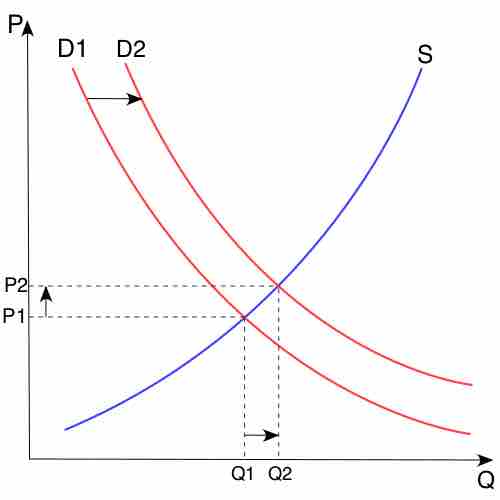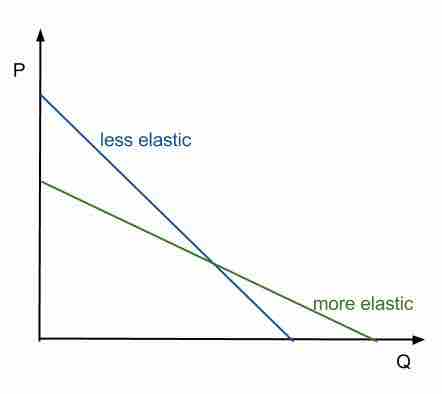In almost all cases, consumer choices are driven by prices. As price goes up, the quantity that consumers demand goes down. This correlation between the price of goods and the willingness to make purchases is represented clearly by the generation of a demand curve (with price as the y-axis and quantity as the x-axis). The construction of demand, which shows exactly how much of a good consumers will purchase at a given price, is defining of consumer choice theory.
Deriving Overall Demand
The generation of a demand curve is done by calculating what price consumers are willing to pay for a given quantity of a good or service. For normal goods or services, demand is illustrated with a downward sloping curve, where the quantity on the x-axis will generally increase as the price on the y-axis decreases (and vice versa). The quantity demanded may change in response to both to shifts in demand (and the creation of a new demand curve, as demonstrated in ) and movements along the established demand curve. A demand shift usually takes place when an external factor increases or decreases demand across the board, while a movement upwards or downwards on the curve is indicative of a change in the good's price.

Demand Shifts
This graph demonstrates a shift in overall demand in the market, where the generation of a new parallel demand curve is required to accurately represent consumer choices.
As the demand curve implies, price is often the central driving force behind a decision to purchase a given product or service. Consumers must weigh the overall utility they can capture by making a purchase and benchmark that against their overall monetary resources to optimize their purchasing decisions. This practice regulates the price companies can set for their products and services, as the income effects and the prospective substitutions (substitution effect) will drive consumer purchase towards purchases that create the most value for themselves.
Price Elasticity
A critical consideration of product/service pricing is the price elasticity of a given good, which indicates how responsive demand is to a change in price. Price elasticity is essentially a measurement of how much any deviations in price will drive the overall quantity purchased up or down, underlining to what extent consumer purchasing decisions will be dictated by pricing. The figure pertaining to price elasticity shows how the slope of the demand curve will change depending on the degree of price sensitivity in the marketplace for a good. A highly elastic good will see consumers much less likely to purchase when prices are high and much more likely to purchase when prices are low, while a good with low elasticity will see consumers purchasing the same quantity regardless of small price changes.

Price Elasticity
As this graph demonstrates, the slope of the demand curve will vary as a direct result of how elastic consumer purchasing behaviors will be compared to price changes.
Using demand curves, economists can project the impact of a price change on the consumer choices in a given market.